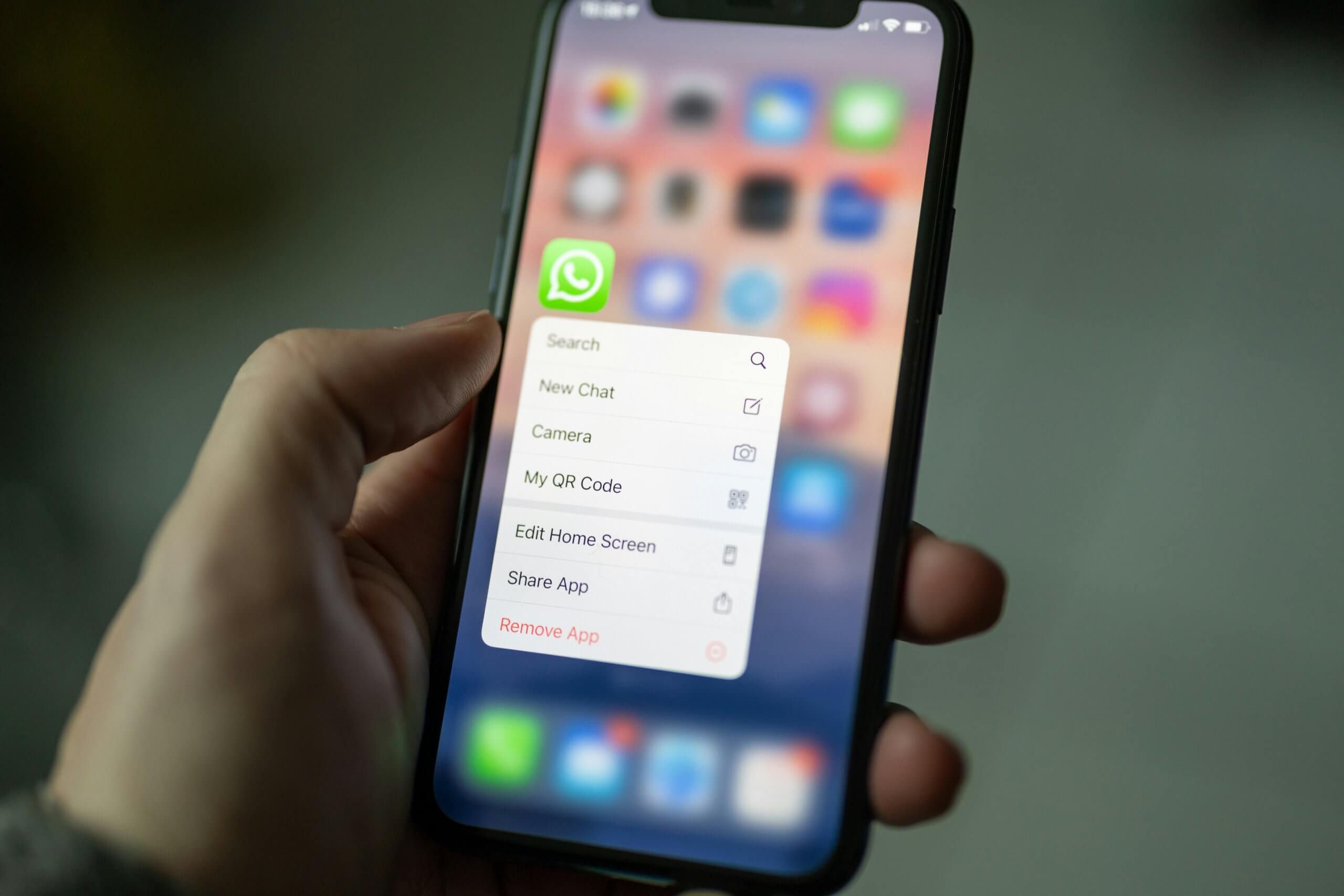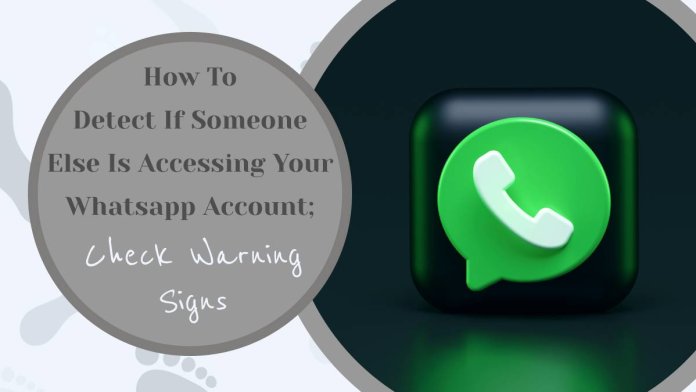In a world where our smartphones are not just communication tools but extensions of our identities, the security of our messaging apps is paramount. Imagine scrolling through your WhatsApp chats only to stumble upon unfamiliar conversations or peculiar notifications that leave you feeling uneasy. The thought that someone might be lurking in the shadows, accessing your personal messages and private exchanges, can send a chill down anyone’s spine. But how do you know if your account has been compromised?
Detecting unauthorized access to your WhatsApp isn’t just about noticing strange activities; it’s about understanding the subtle signs that indicate something may be amiss. From sudden changes in online status to unexpected logins, there are various warning signals that can help safeguard your digital privacy. In this article, we’ll explore practical ways to identify if someone else is snooping on your account and provide essential tips on how to protect yourself from potential intrusions. Stay vigilant; knowledge is power when it comes to keeping your secrets safe!
Signs of Unauthorized Device Access
One of the most telling signs of unauthorized access to your WhatsApp account is unexpected activity in your chat logs. If you notice messages sent from your account that you didn’t initiate, it’s a red flag indicating someone else might be using your device or accessing your account remotely. This could include unsent messages appearing as delivered or strange media files featuring contacts you’ve never interacted with.
Another critical sign lies in the appearance of unfamiliar devices linked to your WhatsApp Web session. Regularly reviewing the list of active sessions can reveal connections to devices you don’t recognize, especially if they show recent activity when you’re certain you haven’t accessed WhatsApp on those devices recently. Additionally, feel for subtle changes in settings—such as shifts in last seen status, profile photo alterations, or modified privacy settings—that seem incongruent with how you typically manage your account. Vigilance and proactive monitoring are vital; any discrepancy should prompt an immediate reset of your security measures including password changes and two-factor authentication setups.

Unusual Activity in Chat Logs
Unusual activity in chat logs can serve as a critical red flag that someone else may be accessing your WhatsApp account. Look for conversations you don’t recognize, especially those featuring unfamiliar contacts or messages sent at odd hours. This could indicate that a third party is engaging with your contacts and manipulating conversations to mislead or harass them—an alarming breach of privacy.
Moreover, pay attention to changes in message styles. If responses seem unusually curt or vary significantly from how you usually communicate, it’s worth investigating further. Discrepancies in the tone or content of messages sent under your name can expose an unauthorized user who may not be aware of your personal style and context within chats. Regularly monitoring chat logs not only empowers you to catch potential intruders but also shields your social circle from possible impersonation scams that can originate from compromised accounts.
Unexpected Logout Notifications
One of the most telling signs that someone might be accessing your WhatsApp account is receiving unexpected logout notifications. These alerts can arrive via email or directly through the app, indicating that your session has been terminated from a device you don’t recognize. This sudden disconnection should raise red flags; it’s an undeniable signal that your privacy could be compromised. If you find yourself logging back in frequently or facing multiple logouts in a short span of time, it may be the perfect moment to reassess your security settings.
Moreover, consider how you react to these notifications. Genuine users often assume such messages are mere glitches or temporary issues with their internet connection. However, staying complacent could leave you vulnerable. Use this opportunity not just to re-establish access but also to activate two-step verification if you haven’t already done so—this extra layer acts as a formidable barrier against potential intruders seeking unauthorized entry into your private conversations and shared media files. By understanding and acting on these logout notifications, you’re taking proactive steps towards safeguarding both your personal information and peace of mind.

Changes in Privacy Settings
One of the most significant changes in privacy settings on WhatsApp is the ability to customize who can see your last seen, profile photo, status updates, and about information. This feature empowers users to have greater control over their visibility and prevents unwanted attention from those who may try to access your account without permission. If you’ve noticed unusual access patterns or feel uneasy about your privacy, revisiting these settings can be a proactive measure. For instance, switching your last seen status to My Contacts ensures that only trusted individuals see when you were last active.
Moreover, WhatsApp has introduced an option that allows you to hide read receipts while still being able to send them. This subtle shift in privacy approach can sometimes disorient others with whom you regularly communicate; they may become suspicious if they can’t ascertain whether you’ve managed their messages. By crafting a tailored privacy experience, you’re not just protecting yourself from potential intruders but also curtailing unnecessary drama with contacts who might wonder why they’re being ignored. All said and done, vigilance within these settings is essential for maintaining both security and peace of mind amidst evolving digital landscapes.
Suspicious Profile Picture or Status Updates
One of the most eye-catching indicators that someone might be accessing your WhatsApp account is an unexpected change in your profile picture or status updates. If you’re suddenly greeted by a profile image that doesn’t match your personality or style, it’s worth investigating further. Cyber intruders often manipulate accounts to create a false identity, using images pulled from public sources to deceive friends and family. This could particularly manifest in status updates that feel out of character—be it cryptic quotes, links to dubious sites, or messages meant to provoke reactions.
Moreover, pay attention to the timing of these changes. If you notice new statuses being posted at odd hours when you’re typically offline—or even worse, significant personal announcements made without prior notice—it should raise flags. These behaviors are often strategic attempts by an unauthorized user not just to mask their intrusion but also draw unsuspecting victims into conversations designed for malicious purposes. For anyone who values their privacy and connection with loved ones, taking a moment to scrutinize these subtle red flags can help safeguard your online presence before damage is done.
![]()
Receiving Verification Codes You Didn’t Request
Receiving verification codes that you didn’t request can be an unsettling experience, often signaling that someone may be trying to gain unauthorized access to your WhatsApp account. It’s crucial to recognize these notifications not just as annoyances but as potential alarms ringing for your privacy and security. When these unsolicited codes arrive, they could indicate that someone is attempting to hijack your account by entering your phone number during the verification process. This malicious activity might stem from a simple mistake, but more often it hints at a targeted attempt to breach your digital safety.
However, this situation presents an opportunity–a chance for you to take proactive steps in safeguarding your account. If you receive multiple such codes in quick succession, it’s smart to change your password and enable two-step verification immediately. By adding an extra layer of security, you’re not only protecting yourself against unwanted intruders but also asserting control over who has access to your personal conversations and information. Additionally, staying vigilant about unusual activities within the app—like unexpected logins or strange messages—is essential for maintaining robust security measures against potential threats lurking in the shadows of cyberspace.
Conclusion: Protecting Your Digital Privacy
In an era where our digital lives are deeply intertwined with everyday activities, safeguarding privacy has never been more crucial. As we’ve explored the signs of unauthorized access to your WhatsApp account, it’s clear that this vigilance needs to extend beyond just one app. Implementing robust security measures like two-factor authentication and regularly reviewing privacy settings can act as a first line of defense against potential intrusions. But there’s more; cultivating a mindset of digital awareness is essential. This means not only being proactive about protecting individual accounts but also understanding the broader implications of data sharing in a hyper-connected world.
Moreover, fostering good habits around device security—such as using strong passwords and recognizing phishing attempts—can significantly bolster your defenses. Remember, every time you share information online, you’re giving others snippets of your personal narrative that can be pieced together in ways you may never have foreseen. Let this serve as a reminder that while technology connects us like never before, it also requires us to remain vigilant stewards of our own digital identities. By making informed choices about how and where we communicate, we not only protect ourselves but contribute to a culture of respect for digital privacy globally.
